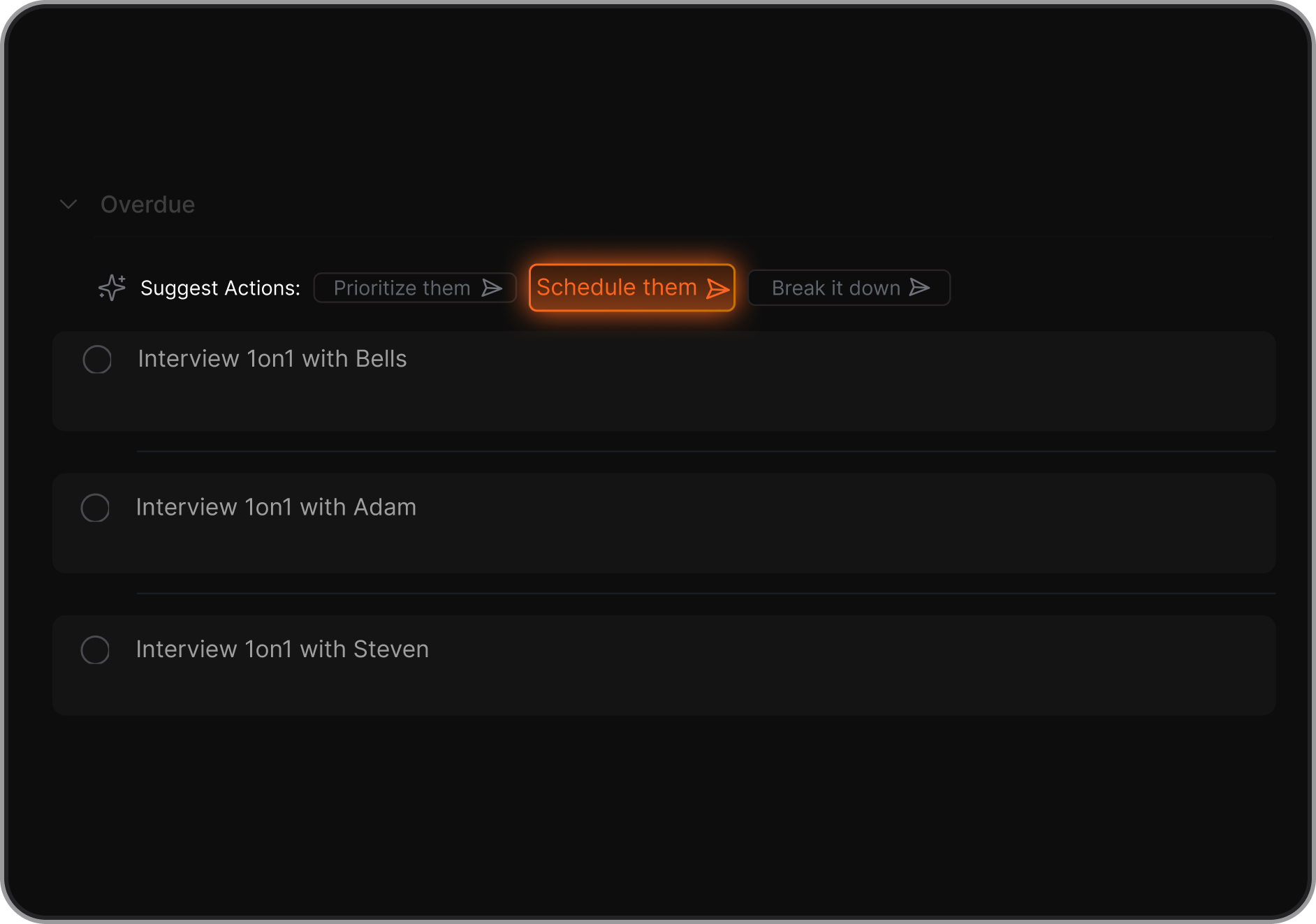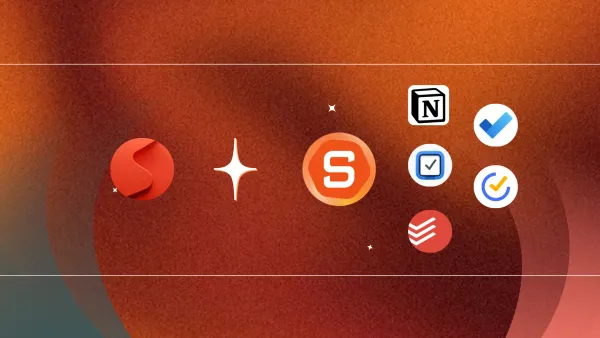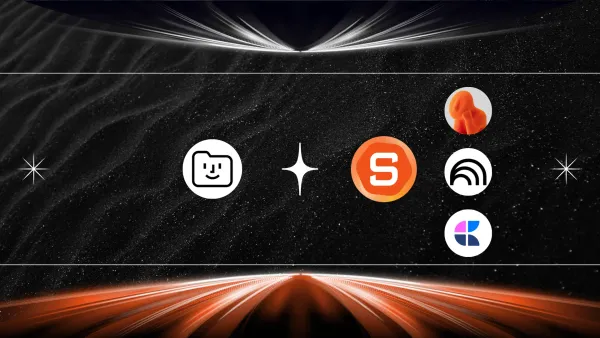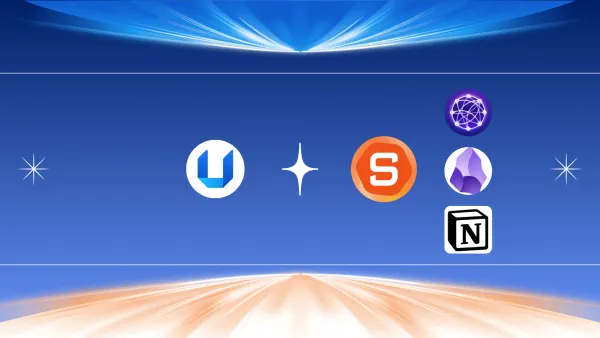ADHD Task Initiation: 4 Applicable Tactics [2025]
ADHD task initiation: 4 Steps to start your work
Have you ever felt like you could conquer the world, if only you could get started on that project or homework assignment?
If you have ADHD, you might find kicking off tasks a bit like trying to start a campfire with wet wood—it can take a lot of effort!
Today, we're diving into the world of task initiation, which is just a fancy way of saying "getting started on stuff." So, let's break it down and discover some cool ways to boost your start-up skills!
I. Introduction

Overview of ADHD (Attention Deficit Hyperactivity Disorder)
ADHD is a neurodevelopmental disorder characterized by inattention, hyperactivity, and impulsivity that can significantly impact a person's life. It affects approximately 8.4% of children and 2.5% of adults in the United States.
ADHD can present in three ways:
- Predominantly inattentive type: characterized by difficulty focusing, sustaining attention, and organization
- Predominantly hyperactive-impulsive type: characterized by restlessness, excessive talking, and difficulty waiting one's turn
- Combined type: meeting criteria for both inattention and hyperactivity-impulsivity
Symptoms of ADHD often emerge in early childhood and can persist into adulthood. Without proper treatment, ADHD can lead to academic difficulties, family stress, depression, problems with relationships, and job failure (*)
Treatment options for ADHD include:
- Behavioral therapy and counseling
- Stimulant and non-stimulant medications
- Creating a supportive environment
- Using task management techniques
- Utilizing note-taking apps can make a big difference.
With proper treatments and strategies, individuals with ADHD can lead successful lives
II. Understanding ADHD task initiation

Task initiation means being able to start something, whether it’s a fun project or a boring chore. For people with ADHD, getting started can feel unusually difficult, even if they want to do the task.
That’s because ADHD affects how the brain manages something called executive function, the mental skills that help you plan, organize, and shift focus. These skills are mostly handled by the prefrontal cortex, and they rely on brain chemicals like dopamine and norepinephrine to work properly.
Here’s the catch:
People with ADHD typically have lower levels of these chemicals. That means the brain doesn’t get the same sense of motivation or reward from starting a task, especially if it feels boring or unimportant.
In a typical brain, starting a task triggers dopamine, which makes you feel good and keeps you going. But with ADHD, that dopamine “kick” doesn’t come as easily, so getting started often feels like pushing a car with no gas.
This is why task initiation is such a common challenge for ADHD brains. It’s not about laziness, it’s about chemistry.
Impaired executive functions in ADHD can lead to:
- Difficulty breaking down large tasks into smaller, manageable steps
- Procrastination and task avoidance
- Poor time management and missed deadlines
- Lower academic or professional performance
- Increased stress and anxiety
- Relationship tensions due to perceived laziness or disorganization
Understanding the underlying reasons for task initiation difficulties in ADHD is crucial for developing effective strategies to overcome this challenge.
III. Challenges Faced by People with ADHD
Individuals with ADHD often face significant challenges that can impact their daily functioning, particularly when it comes to initiating tasks. Here are some key difficulties:
Procrastination and Its Prevalence in ADHD
- Procrastination is a hallmark struggle for many with ADHD. This isn't just about delaying tasks; it's a chronic issue where starting tasks becomes a significant hurdle.
- For example, an adult with ADHD might delay starting a project at work, not due to laziness but because of an inherent difficulty in initiating tasks. This can lead to a cycle of stress and rushed work as deadlines approach.
Overwhelm from Task Complexity or Ambiguity
- Tasks that are complex or lack clear instructions can be particularly daunting for someone with ADHD. The ambiguity or the multistep nature of a task can lead to overwhelm, making it difficult to figure out where or how to start.
- Breaking tasks into smaller, manageable steps can be a crucial strategy. For instance, if a project seems too big, listing out each step needed to complete it can make the task feel more approachable.
Difficulty Prioritizing Tasks
- ADHD can impair the ability to prioritize tasks effectively. This can manifest as challenges in time management and frequently missed deadlines.
- Adults with ADHD might benefit from explicit prioritization strategies, such as using digital tools to set reminders, making lists of daily tasks ranked by importance, or even consulting with a coach to improve organizational skills.
Emotional Dysregulation
- Emotional dysregulation is common among adults with ADHD and can complicate task initiation. Intense emotions, such as frustration, anxiety, or guilt, can accompany the paralysis of starting tasks.
- This emotional response can create a barrier to productivity and exacerbate feelings of inadequacy or failure.
- Understanding these challenges allows us to come up with appropriate strategies that can significantly improve the ability of people with ADHD to start work, leading to improved productivity and reduced daily stress.
4 Practical Tactics to initiate the task for ADHDers

Individuals with ADHD often face challenges with task initiation, but various strategies can help improve this aspect of daily functioning.
Here are some effective approaches:
1. Breaking Tasks into Smaller, Manageable Steps
Why should we break down tasks?
Imagine you have a huge poster to create for school. Just thinking about the whole project can make you feel like you're at the bottom of a mountain, looking all the way up to the peak. It's daunting, right? But what if you could climb that mountain one small hill at a time?
That's what breaking tasks into smaller steps does. It turns the "mountain" into a series of little hills. Each step you complete gives you a boost of confidence and makes the next step seem even easier.
Dividing larger tasks into smaller, more achievable steps can make starting them less overwhelming and more manageable
This method helps individuals with ADHD initiate tasks by focusing on one step at a time, reducing the perceived difficulty of the overall task
How to break down tasks?
Here is a concise summary of the key points for breaking down a big task into smaller steps:
- Define your big task clearly to understand the overarching goal.
- Brainstorm all the sub-tasks that make up the larger goal using mind maps, checklists, or discussions.
- Prioritize the sub-tasks based on urgency, importance, and dependencies.
- Set SMART goals (specific, measurable, achievable, relevant and time-bound) for each sub-task.
- Allocate the necessary resources, including time, tools, materials, skills and knowledge for each sub-task.
- Start with the first sub-task and focus on one step at a time to build momentum.
- Monitor progress using checklists, time tracking, and celebrating milestones.
- Adapt and stay flexible to problem-solve obstacles and reevaluate priorities as needed.
- Combine related sub-tasks into phases or stages for more efficient management.
- Review the outcome, identify lessons learned, and celebrate your success upon completing the big task.

2. Using Visual Aids like Checklists or Planners
When you have a lot on your plate, whether it's homework, chores, or planning for a big project, it can sometimes feel overwhelming.
This is especially true for individuals with ADHD, who might find it extra challenging to figure out where to start or stay on track.
A checklist or a planner works like a map for building your model. It helps you see what parts you need to start with, and what comes next
Here’s how Visual Aids tools help:
- Organize Tasks: Think of a planner as your daily game plan. Just like a coach breaks down the plays for their team, a planner breaks down your day. You can see what you need to do for school, when you have soccer practice, and even when you’re hanging out with friends.
- Set Priorities: Some tasks are like scoring a goal—they’re super important. Others might be more like passing the ball—also important but can come a bit later. Checklists help you see which tasks are the goals and which are the passes, so you know what to tackle first.
- Track Progress: There’s a real kick in being able to check off a task when it’s done. It’s like crossing the finish line in a race. Each checkmark shows you’re one step closer to your goal, whether it’s finishing a project or just getting through your to-do list for the day.
Checklists and planners make things less overwhelming and a lot more manageable. Plus, it feels great to see your progress as you check off each task, one by one!
3. Mindfulness Techniques to Reduce Anxiety and Increase Focus
Mindfulness might seem like a fancy term, but it's actually a super simple tool that can help you chill out and sharpen your focus, especially if you have ADHD.
Think of it as a secret weapon that helps you manage those moments when your thoughts feel like a bunch of browser tabs open all at once.

Why Mindfulness is Good for ADHD
Imagine you're trying to watch your favorite YouTube video, but someone keeps changing the channel. Annoying, right? That's a bit what ADHD can feel like: your brain keeps switching tasks, and it's hard to stay tuned to what you need to focus on.
Mindfulness helps by turning down the noise and keeping your brain on the "channel" you want, whether that's doing homework, listening in class, or even playing a sport.
Easy Mindfulness Techniques
Here are a couple of techniques that are easy to start with:
- Deep Breathing: This isn't just taking regular breaths, but really focusing on them. Imagine you have a balloon in your belly. When you breathe in, make the balloon inflate slowly, and when you breathe out, let it deflate. Try this slowly about five times. It's like hitting the reset button on your gaming console when it glitches — suddenly everything runs smoothly again.
- Meditation: This can be as simple as sitting quietly and noticing the sounds around you. Maybe you hear birds, cars, or the hum of the fridge. The goal isn't to block these out but to just listen and let them be. It's like sitting on the sidelines of a soccer game watching the play happen without jumping in.
How This Helps for Task Initiation
With less anxiety and more focus, it's like clearing a foggy windshield. You can see your tasks more clearly and figure out how to tackle them without feeling overwhelmed.
For example, say you have a big project. Instead of freaking out about how big it is, mindfulness helps you break it down into steps and focus on one thing at a time, like first gathering your materials, then outlining what you need to do, and so on.
Making It Part of Your Day
Try making mindfulness a regular thing, like brushing your teeth. You could do a few minutes of deep breathing before a test or meditate for a few minutes after school. It doesn't have to take long — even a little bit can make a big difference in how you handle stress and stay focused.
By practicing these simple techniques, you can turn down the noise in your brain, feel calmer, and find it easier to jump into your tasks with a clear head. Give it a try and see how it changes your game!
4. Rethink to Overcome Negative Thought Patterns
Why Rethink for ADHD
Imagine you're about to start a big project or homework assignment. If your brain keeps telling you, "This is too hard, I can't do this," that's like putting on a backpack full of rocks before a race. It slows you down right from the start.
Rethink helps you unpack those rocks and replace them with something lighter, like a bottle of water or a snack, tools that help you, instead of holding you back.
How to Flip the Script on Negative Thoughts
Here’s how you can start changing those unhelpful thoughts:
- Catch Your Critic: First, notice when you're being hard on yourself or thinking something negative, like "I always mess up." It's like spotting a sneaky gremlin trying to trip you up.
- Challenge the Critic: Ask yourself, "Is this really true?" or "Would I say this to a friend?" Often, you'll find that you're being much tougher on yourself than you need to be.
- Change the Channel: Once you've caught and challenged your negative thought, switch it to something more positive and realistic. Instead of thinking, "I always mess up," you could think, "Everyone makes mistakes, but I can learn from them and try again."
Real-Life Example: Let's say you have a big science project due. Your brain might start with, "I'm terrible at science. This is going to be a disaster." That's your cue to catch that thought, challenge it by remembering times you did well or learned something new in science, and change it to, "Science can be tough, but I'm going to tackle this project step by step, and ask for help if I need it."
Why This Helps
By turning negative thoughts into more positive ones, you're not just making yourself feel better; you're also setting yourself up for success.
It's like clearing a bunch of hurdles off your track before you start running. With a clearer path, you're more likely to start your tasks and stick with them until you're done.
5. Apps to help with Task Management and Reminders
Apps and software designed for task management and reminders can be super helpful, especially for people with ADHD. These tools act like a personal assistant that never forgets, helping you remember what you need to do, when you need to do it, and even how you can get started.
Why Are These Apps So Useful?
- Imagine you have a big school project. It might feel like a giant mountain of work, and you might not even know where to start. This is where task management apps come in handy.
- They help you break down your big project into smaller, more manageable tasks, like a list of steps. It’s like turning a big, scary mountain into little hills that are much easier to climb.
Clear Organization
- These apps let you organize your tasks in a way that makes sense to you. You can see everything you need to do in one place, which helps you focus on one thing at a time.
Reminders Keep You on Track
- Ever forget to do your homework or practice for soccer? These apps won’t let you! They send reminders that can help you remember to start your homework, pack your sports gear, or even take a break and have a snack.
Tracking Your Progress
- It’s really satisfying to see how much you’ve already done. These apps often let you check off tasks as you complete them, which can make you feel good and motivate you to keep going.
- By using task management and reminder apps, the process of beginning a task becomes less intimidating and more structured, which can significantly help individuals, especially those with ADHD, in overcoming hurdles related to task initiation.
This is the list of the best apps for ADHD you can try
- Saner.AI
- TickTick
- Todoist
- Google Keep
- Microsoft Todo
- Apple Reminder
- Any.do
- Google Task
V. Conclusion
Task initiation is a critical aspect of daily functioning that can be particularly challenging for individuals with ADHD.
By understanding the underlying challenges and employing effective strategies, individuals with ADHD can improve their task initiation skills, leading to better time management, reduced procrastination, and enhanced overall functioning.




